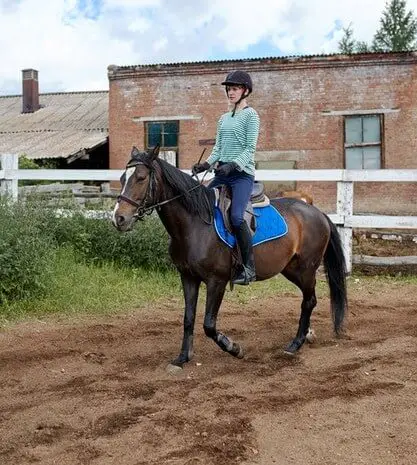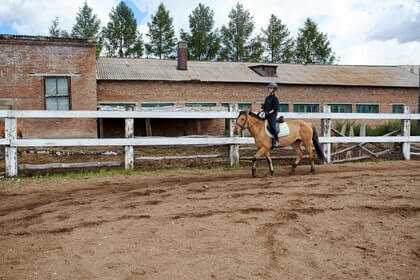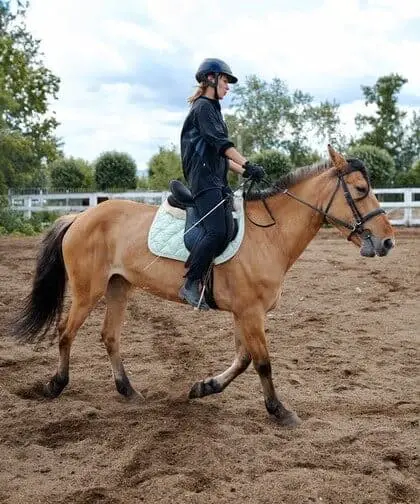A round pen is a type of arena for horses to work in. They are typically circular and made from either wood or metal. The height, diameter, and material used can vary depending on the needs of the horse owner.
The best type of sand for a horse round pen will depend on many factors such as climate, time of year and location. There are three main types: playa, silica and white quartzite.
Playa Sand – Playa sand has great properties that make it ideal for horse owners to use in their horse round pens. Playa sand is good for the ground because it doesn’t compact like other types of soil, which means your horses are laying on a soft surface instead of hard dirt or gravel. Playa sand also helps keep the flies away from your horses’ face and eyes, so they can enjoy their time in their horse round pen and not be bothered by pesky insects.
Silica Sand – Silica sand is a good choice for horse pens as it is non-toxic and safe to use. This type of sand will not cause any harm if ingested by the horses, nor will it irritate their skin. The silica in the sand also helps to maintain a healthy pH level in the pen, which can be very important when caring for animals (especially those with delicate skin).
Quartzite Sand – Quartzite sand is a very popular choice for horse pen flooring. It’s porous nature makes it easy to clean out after a long day at the stable. Quartzite also does not produce dust when walked on like other types of sands will do, so you don’t have to worry about your horse’s legs getting dirty or dusty. The small grains are also great for footing because they give horses traction that prevents them from slipping on wet surfaces.
It is fair to say that there are many options available; some types work better than others depending on what you need them for. Fine grained sand will make it easier to sweep up with a broom, but coarser grains will be more comfortable for your horse if they stand still long enough.

The type of sand you put in the bottom of your horse’s pen will affect the stability, safety, and cleanliness of it. There are many different types of sand that can be used for this purpose, but not all are equal.
The key thing is that if you choose this option is to make sure that there are no sharp rocks or other materials that could injure your horse.
How do you keep sand in a round pen?
While the benefits of sand are many, there is a common problem in horse round pens: it can be difficult to contain in some areas.
The sand moves around and makes it difficult for the horses to stay on their footing.
One way to solve this issue is by using bales of hay or straw to contain the sand, but these also require frequent changing due to moisture buildup. To avoid this extra work, there are other solutions that can be used instead.
Another option is fencing off an area so that the horses don’t have access to it at all times, which will keep the sand contained within its boundaries.
A third option would be installing rubber mats down so that they provide some grip for the horses’ feet, preventing them from slipping because of wet sand or loose dirt underneath them (which would then cause more problems).
How much sand is needed in an arena?
A perfect balance of grip and traction is essential to having a great time on your horse.
It all depends on the size of your pen and how deep you want to dig. The general rule is that you will need around 10 sq ft of sand for every foot in length and width, so a 3×6 pen would need 30 square feet of sand.
If the ground underneath the area where you want to build your round pen is soft or sandy, then digging down one foot should be enough. But if there’s anything hard under the surface, like clay or rock, then you’ll need more than one foot before you can get any usable depth for your construction project.

For plain sand arenas, 2-3 inches of fine sand will do wonders for you.
Always consult with an experienced horse riding arena builder when picking what kind or depth as there are many options out there that may surprise even experts like me 🙂
A coarser texture can make shifting around more difficult so stick close to some of the recommended guidelines below.
Sand makes for an excellent footing because it provides soft ground without being too loose or too hard. You can find sand at any construction supply store and it shouldn’t cost more than $5-$10 per yard plus tax.
Can you use mulch in a round pen?
Horse owners often use hay or straw for horse round pens. But, if you do not have hay or straw available, can you use mulch?
Mulch is a coarse material that is made out of shredded wood and leaves. This type of material will provide the same function as hay or straw. So yes, mulch can be used in horse round pens.
Mulch may also be more durable than other types of materials which means it will need to be replaced less frequently than other materials.

However, it must be mulched with a material that the horses cannot eat or get into their eyes. This might not always work because sometimes animals will eat anything they come across.
If putting mulch in your horse round pen is something you want to do, below are the steps to get started with this project.
Step 1: Create a trench around the perimeter of your circular pen, about 6 inches deep and wide enough for the width of your tractor’s bucket.
Step 2: Put down weed blocker fabric in each side of the trench, then put down plastic sheeting across all four sides.
Step 3: Fill up both trenches with composted manure or peat moss mixed with water until it is 8-12 inches thick. You want it to be moist but not soggy when you walk on it. Then place your mixed mulch on this surface.
Final Thoughts
Some types of sand are more abrasive on the horses feet than others. It is best to use a finer grain size in a round pen because it will not damage their hooves as much as a coarser grain size would.
There are many different grades of sand that you can choose from but I would recommend using an equestrian-grade sand which has been processed with water and screened through screens that have holes smaller than 2mm or 1/16 inch in diameter.
This type of sand will also not produce dust like other types when walked on by the horse or people walking around outside the arena area.

